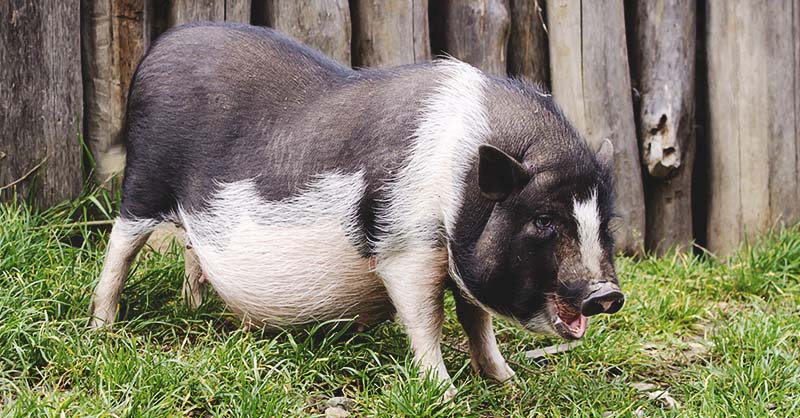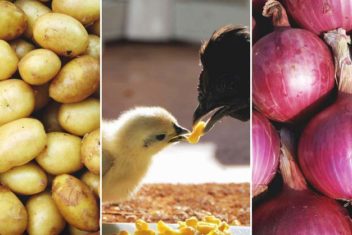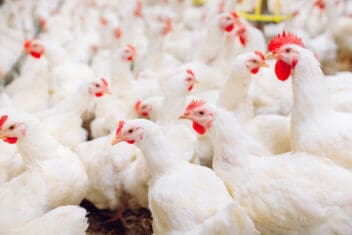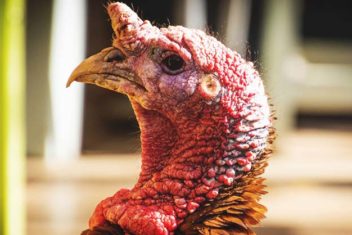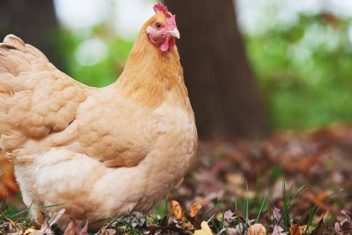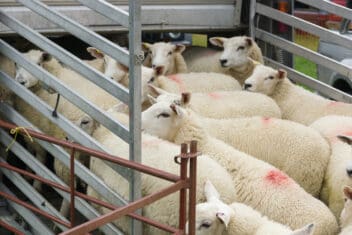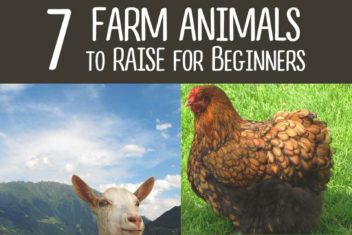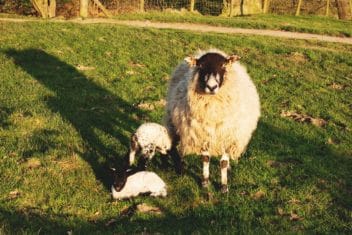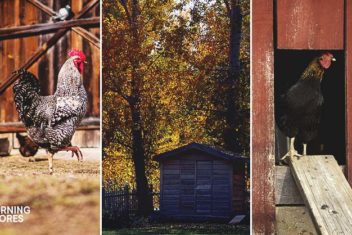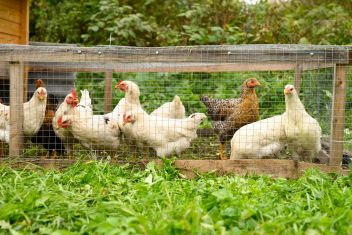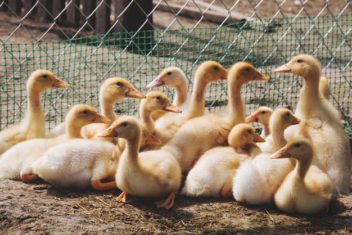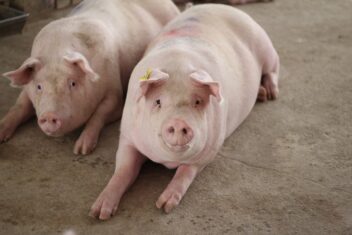I am lazy at math. So, whenever I expose my female goats to my buck, I always have to track down an online gestation calculator to figure out when I’ll have babies due. Then, I have to do the same when I incubate chicks, ducks, rabbits, mealworms, or whatever else I am trying to hatch or have babies of.
Well, that made me think, “Wouldn’t it be nice if I could use just one calculator that told me the due dates for everything?” When I couldn’t find one that did it all, I asked our behind the scenes web programmer extraordinaire at Morning Chores if he could make a breeding calculator.
Thanks to his enthusiastic yes, I am happy to present to you the one-stop-shop incubation and gestation calculator for all your homesteading needs!
Bookmark this for whenever you need it. Also, if I happened to miss anything you have in your homestead, let me know and we’ll update the list to make it easier on all of us.
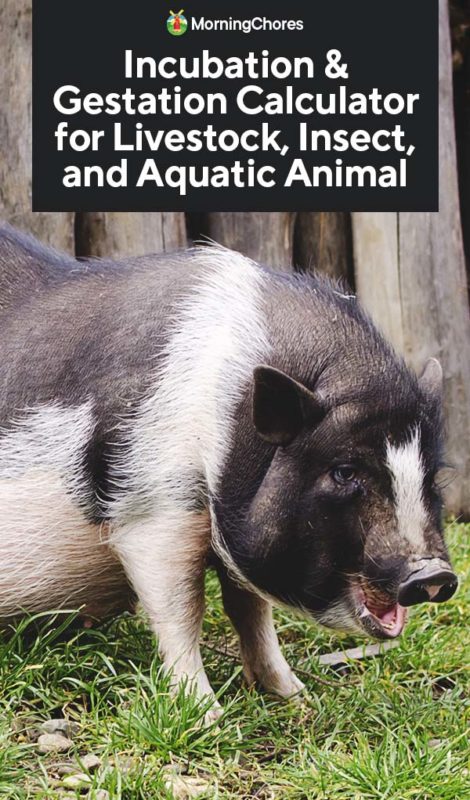
How to Use the Gestation Calculator
You will have no difficulty figuring out how to use this calculator. Just scroll down to the animal, insect, or aquatic animal you are looking for, enter your exposure or incubation start date, and your due date will pop up.
For example, if you were searching for a chicken incubation calculator, we have that here. However, there are just a few things I want you to be aware of before you calculate your due dates.
Estimated Due Dates
I used average dates based on a review of various websites to create this list. So, it should be pretty accurate. However, there might be slight variations based on breed or genetic history. For example, some rabbit breeds may vary from each other by a few days.
Long Gestation Periods
With some animals like donkeys and camels, there’s a wide variance in the time it takes from exposure to labor. For all the livestock on this list with really long gestation periods (e.g longer than humans), be aware that labor can actually happen much earlier or later than this date.
For shorter gestation periods, the variance is usually much less. As an example, for goats with a 150 day gestation period, actual due dates are usually plus or minus a few days from the average. For chickens, with only a 21 incubation period, hatching tends to be right on time (unless something went really wrong during incubation).
Aquatic and Insect Life
For aquatic life, the water temperature has a big impact on hatch rates. Colder temperatures slow down egg incubation while warmer temperatures speed it up.
The dates represented below are based on the temperatures hatcheries use for peak production and aquatic life health. They may not match up with hatch times in natural settings where the water temperature is variable.
Similarly, the insect hatch rates assume a controlled indoor environment temperature.
Incubation and Gestation Calculator
Now, without further ado, here’s our one-stop incubation and gestation calculator for all you busy homesteaders out there!
| Animal Name | Average Incubation or Gestation Period | Incubation or Exposed Date | Hatch or Due Date |
|---|---|---|---|
| Alpaca | 350 | ||
| Ants (Cultivated Farms) | 7 to 14 | ||
| Barn Owl | 31 to 32 | ||
| Barn Swallow | 14 to 16 | ||
| Bison – American | 217 | ||
| Bluegill | 1 to 6 | ||
| Blue Heron | 27 to 29 | ||
| Blue Jay | 17 to 18 | ||
| Bobwhite Quail | 23 to 24 | ||
| Cardinal | 13 | ||
| Carp | 3 to 6 | ||
| Cat | 58 to 67 | ||
| Catfish | 10 | ||
| Camel – Bactrian | 360 to 420 | ||
| Camel – Dromedary | 450 | ||
| Chicken | 21 | ||
| Chinchilla | 110 | ||
| Coturnix Quail | 16 to 18 | ||
| Cow | 283 | ||
| Deer – White-tailed | 201 | ||
| Dog | 57 to 65 | ||
| Donkey | 360 to 375 | ||
| Duck – Mallard Family | 28 | ||
| Duck – Muscovy | 35 | ||
| Emu | 50 to 52 | ||
| Ferret | 41 | ||
| Geese | 28 to 33 | ||
| Gerbil | 25 | ||
| Goldfinch – American | 12 to 14 | ||
| Guinea | 27 to 28 | ||
| Goat – Full Size | 150 | ||
| Goat – Mini Breed | 145 | ||
| Hamster | 20 | ||
| Hawks – Chicken | 38 to 41 | ||
| Honey Bees | 3 to 4 | ||
| Horse – Full Size | 330 to 345 | ||
| Horse – Miniature | 320 | ||
| Kangaroo | 42 | ||
| Llama | 330 | ||
| Mealworms | 4 to 7 | ||
| Mice (Pet) | 19 to 21 | ||
| Night Crawlers (European) | 14 to 21 | ||
| Ostrich | 42 | ||
| Pea Fowl | 28 to 29 | ||
| Pheasants | 23 to 26 | ||
| Pig | 112 to 114 | ||
| Pigeon | 16 to 19 | ||
| Rabbit | 28 to 32 | ||
| Salmon | 56 | ||
| Sheep | 147 | ||
| Shrimp | 1* | ||
| Silkworms | 14 | ||
| Soldier Flies | 4 | ||
| Swan | 35 | ||
| Tilapia | 3 to 5 | ||
| Tuna – Blue Fin | 1 to 2 | ||
| Trout | 21 to 35 | ||
| Turkey | 28 | ||
| Water Buffalo | 300 to 320 | ||
| Worms – Red Wriggler | 23-24 |
